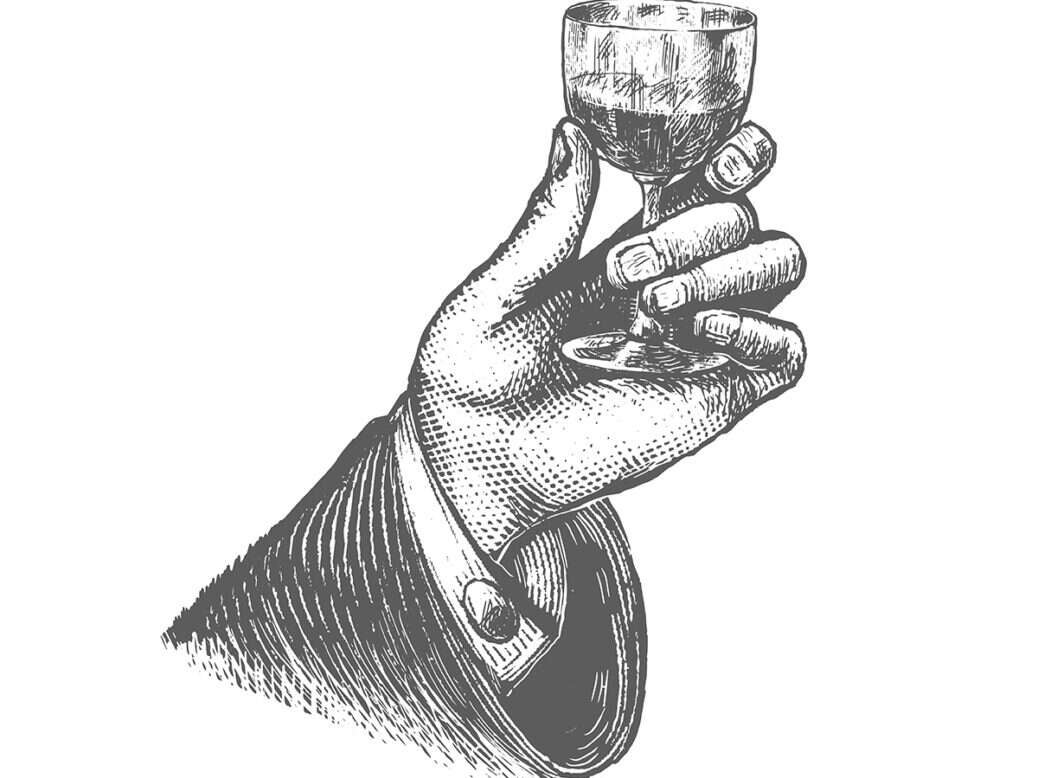
In 1871, the Saturday Review ran an editorial article about the dreadful specter of uncontrolled drinking in the British home. “Drawing-Room Alcoholism” was its diagnostic name for the syndrome, its particular focus being the unregulated drinking that the absence of social oversight was encouraging in women, even among what Victorian morality knew as the “better classes.”
Pitching into what became a widespread debate, the Ashton Weekly Reporter of Manchester pointed out that, when it came to the more heedless materfamilias, “[t]he volume of light wine or beer sometimes taken is almost incredible.” If they could not be enjoined to moderate their drinking habits voluntarily, at least as an occasional test, the discipline should be supervised upon them by responsible male members of the household.
A husband with at least an inkling of conjugal sensitivity might decide to set an abstinent example, where he did not feel that nature had otherwise fitted him to privilege himself with the intake of good wine at his own table. Among the elite sectors of urban society, however, he was quite likely to be able to evade such domestic niceties altogether, and avail himself of all the consumption he might require at his club. Gentlemen’s clubs had flourished in England at least since the early Georgian age, but they rose to a pitch of refinement in the Victorian and Edwardian eras that they would never again attain, and they ran as much on the provision of expertly equipped cellars as on male professional and class solidarity.
From the outset, the gentlemen’s club was conceived as a sanctuary from which men could escape the obligations and restraints of the domestic scene. Before any business was transacted and intelligence exchanged, the first duty of the club was to offer its members the gustatory indulgences of a particularly solicitous hotel. It was not at all unusual for minor nobility, politicians, doctors, professors, military officers—especially those who had arrived at a well-upholstered retirement—to put in an appearance at the club more than once in a day. Lunch was the natural interlude in a day of sociability, and an evening visit, either with dinner or after the evening meal at home, was an agreeable escape from the dullness of conversation at the hearth.
The Athenaeum, the Carlton, and the Reform Clubs, were all founded in the 1820s and 1830s, emerging from the social transition that saw the last of Georgian profligacy give way to the carefully cultivated decorum of Victoria’s reign. All boasted wine committees dedicated to procuring the best vintages for their members, and the quality of the wine served excited a high degree of assertive opinion among members, not all of it entirely informed. In this way, the clubs fomented a culture of connoisseurship that would be bequeathed to those later generations for whom their panelled and portraited ambience had become the last word in stuffy antiquation.
What helped to generate a peculiarly British version of unfettered luxuriance was that the clubs did not fall entirely within the licensing laws, and initially not at all. Nothing so vulgar as the sale of alcohol at profit was taking place in the clubrooms. Rather, their members were simply being supplied with one of the commodious appurtenances of life. This was despite the fact that, as choice batches of Lafite and Clos Vougeot rested in the cellars, they were continuously accumulating in value, and were therefore a smart investment by the club. Only with the Licensing Act 1902 did the clubs come within any kind of legislative purview, but even then they were not considered to be licensed premises in the manner of the working men’s public house, and so alcohol continued to be sold and consumed at any and all hours of the day, and in quantities that scorned the calibrated measures in the pubs.
A little knowledge, even a greater knowledge within a limited compass, is frequently an intellectual hazard, and clubmen were often given to cantankerous barks of indignation at the general quality of the wines with which they were furnished. Like much else in Britain, they could be a barometer of declining standards, evidence that most things were going to the dogs. Members might take to scribbling acid comments on the reverse of their dinner bill, querying the quality of a widely maligned claret vintage or roundly condemning the so-called Champagne as none such. In regaling the member with the vinous treasures of Europe and the Empire, his club was simultaneously breeding in him the variety of discernment that comes with denunciation. Meanwhile, back at home, under the flickering of the gas mantle, the gin level was going down in unsupervised peace.






